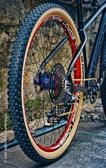
Review on 🔆 Jackery SolarSaga 60W Portable Solar Panel for Explorer 160/240/500 – Compact Foldable Solar Charger for Summer Camping, Van, RV (Not Compatible with Explorer 440/PowerPro) by Dale Hing

Be mindful of the heat! in Solar and Wind Energy
Solar Sega is the latest component added to our emergency preparedness plan (does not require running a generator). The 160 and 240 were primarily designed to address the design flaws of our personal weather station and fixed wireless internet. I bought a Solar Sega to use on long outages due to hurricanes, ice storms, etc. After hurricanes and severe summer thunderstorms break through and cut power, the weather is always clear and sunny. So Solar Sega's job will be to keep the power plants running at Jackery so they in turn can keep the weather station and the internet and all our devices and batteries running without having to set up additional extensions. lines to the generator. This can be real pain and danger. Strings, splinters, more strings... . Now, thanks to Jackery, we can set up two "charging stations” – one for wifi, my husband's computer and his devices, and the other for the weather station monitor and all my stuff. Test run passed, I'd like to respond to a video reviewer's comment about the pocket on the back of the folded panel that holds the 9ft extension. The reviewer believes this to be a design flaw and I agree to some extent. The problem is that when the three piece panel is opened up and laid on the floor, the bulge in the center (the pocket on the back of the center panel) prevents the panel from lying flat. That's right. But he doesn't take into account that there are only three places on earth (and each only twice a year) where it matters - where the panel needs to be flat - 0° angle - for optimal absorption of sunlight. Energy. Here in the deep south my tilt angle in summer – the smallest of the year – is 6°. As you can see in the photo I improvised with a piece of cardboard to get the tilt just right. At 6°, the bag barely lifted off the ground except in the middle. At all other, larger angles, it is above the surface. So for people determining what angles of incidence are optimal at their latitudes, this isn't that important. If you just throw something on the ground, that's how it is. All of this suggests that I would like to see a panel with a fourth section on one end, which is a pouch section. This means that an extension cable can also be connected without the panel resting on it. How did it go? Good and bad. All was well in the end, although I have a few general questions for Jackery. The panel arrived just before noon on a day that started with 25% scattered high clouds and 102,000 LUX in bright sunshine. I took a white sheet to put the panel on and dissipate the heat, a piece of cardboard to get near optimal tilt,jackery 160 dropped to 63% and by 12:15 it was set up and running. . Started out slow but jumped up to 35 watts in just a few seconds. (The maximum power consumption of the station is 42 watts.) At 12:54 my curiosity got the better of me and I'm glad about it. Jackery 160 was in full critical mode! Lots of warning lights and about 1/3 of the display was completely black. Hot as a flame - that's no good - put it down and took it inside. I just had a Lazarus thermometer: in front it was 110°; hand, about 100; back 90; the upper one measured 122° and that after a few minutes inside. I took it to the store and put it in front of the air conditioner window. Within 10 minutes it cooled to less than 80 and was 72% charged. But it still wasn't good. While doing this, I measured the surface of the panel, 170°. Very bad. The jackety's maximum recharge temperature is 104°F. The "operating temperature range" for the panel is 14-104°F. The air temperature was about 92 (I didn't think of measuring the temperature of the earth). I took a gamble and put the jackety back there - in the shade! - around 1:10 p.m. I monitored the temperatures. The Jackery 160 surfaces stayed at 86-96, it started to cloud up and the panel surface temp dropped to 150. The panel eventually charged the Jackery 160 from 63% to full in 2 hours and 45 minutes with about 15 minutes of panic and I suspect it shuts itself off for a while during the high temp warning. We have to give credit, the station did what it was supposed to do - it shut down when it overheated - and recovered perfectly. I'm assuming the max overcharge temp for 160 is the temp of the device since the air temp wasn't 104. So that's up to me; keep it in the shade in Mississippi summers (this 9ft extension will do the trick). But a question for Jackery (who has great customer service by the way). What does "operating temperature range" mean? This should show the temperature of the panel itself. If so, what are your suggestions for panel cooling? I think it's worth lifting it off the ground first to increase airflow. If it's supposed to work after the summer storms/hurricanes mentioned above, it should work when it's hot outside. Offers? Note that this isn't unique to Solar Sega. All portable solar panels are black. This is a heat absorption problem. A few other things. As I mentioned before, the angle of incidence at your latitude matters for efficiency. I would like Jackery to include a map or table (season by latitude) with this information in the user guide. I also tested how well the 160 performs with current throughput when charging from the pad. About as good as switching AC. Bottom line, I'd like Jackery to do three things: 1) explain to consumers the efficiency of his solar panel as a function of angle of incidence; 2) highlight the maximum reload temperatures with a warning sign so that the power plants are in the shadows; and 3) give some ideas how the power plant can be efficiently charged by Solar Sega in the summer heat.
- COMPATIBLE WITH JACKERY EXPLORERS:Jackery Explorer 160 and Explorer 240 take 4.5 and 6.5 hours to charge respectively with Solar Saga 60. This portable solar panel is also equipped with 1*USB-C and 1*USB- A equipped. Port that allows you to charge up to 2 devices at the same time.
- Available in white only
New products
Comments (0)
Top products in 🔌 RV Power & Electrical Parts

Ironing system Tefal Ixeo QT2020EO, gold/black

26 Review
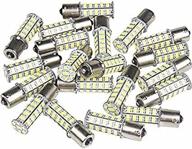
20 Pcs Super Bright 1156 1141 1003 BA15S 68-SMD LED RV Indoor Lights (Pure White 6000K-6500K Color Temputure) - 20 Pack

46 Review
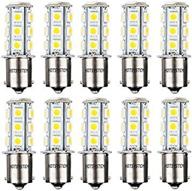
HOTSYSTEM LED Light Bulbs 1156 1141 7506 P21W BA15S 18-5050SMD For Car RV SUV Camper Trailer Trunk Interior Reversing Backup Tail Turn Signal Corner Parking Side Marker Lights(WarmWhite,Pack Of 10)

28 Review
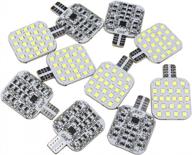
Upgrade Your RV Lighting With Ultra Bright T10 LED Bulbs - Pack Of 10, Pure White

44 Review
Another interesting products

Protect Your RV With LATCH.IT Shade: 7'X9' Zippered Screen Awning For Ultimate Wind Protection And Privacy.

15 Review

12V DC Electric Trailer Jack - 2000Lb Lift Capacity With Hard-Wire Connection

12 Review
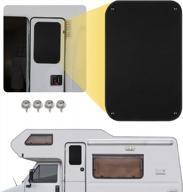
Kohree RV Door Window Shade For Sun Protection And Privacy In Camper Trailers And Motorhomes

25 Review
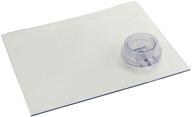
🚪 Upgraded RV Screen Door Slider Panel with Easy-Push Knob Opener

10 Review

